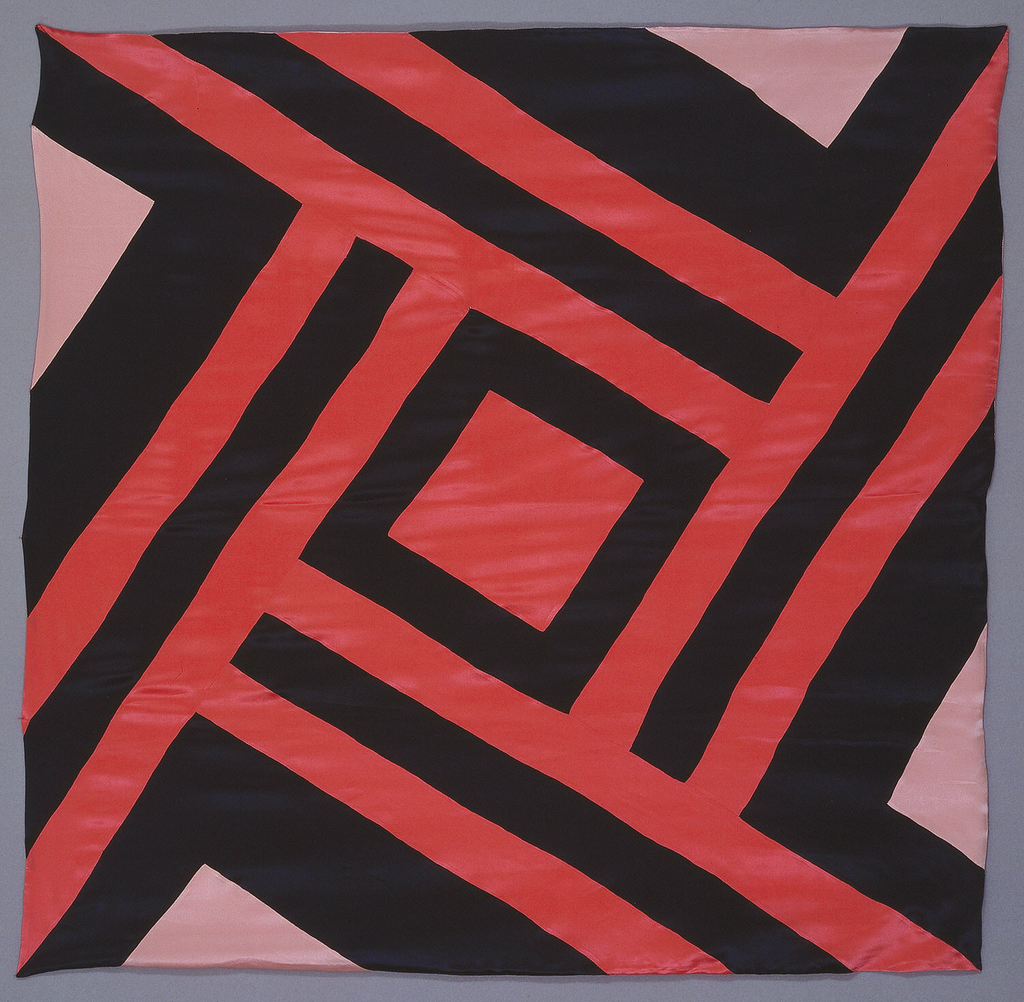With its bold black lines contrasting with the tonal pinks, this scarf would have been a colorful finishing touch to a day ensemble when tied and draped across ones shoulders. The pattern is made not by a printing technique, but by silk satin pieced and hand sewn in the same manner as other pieces of 1920s couture were seamed.
This scarf, along with several others, was donated to Cooper-Hewitt by the husband of international socialite and haute couture devotee, Aimée de Heeren. An arbiter of style, she was included on numerous Best Dressed Lists. de Heeren patronized the major couture houses of her day, including Balenciaga, Dior, Schiaparelli, and Vionnet, as evidenced by her large donation to the Museum at the Fashion Institute of Technology. She was an ardent supporter of Caroline Reboux and completed many of her looks with smart looking headwear from the Parisian atelier.
Well known for her cloche hats and structured, restrained, modern aesthetic, the headwear designer Caroline Reboux (1837-1927) was called “Queen of the Milliners.” The firm began in 1865 by designing for Princess Pauline von Metternich and Empress Eugenie. Through the century, the atelier produced such famous hats as Marlene Dietrich’s berets and Wallis Simpson’s wedding hat. The atelier’s creations were published countless times on the society pages and fashion spreads of Vogue and L’Officiel magazines. When the namesake designer died in 1927, Lucienne Rabaté worked as head designer until the business closed in 1956.
